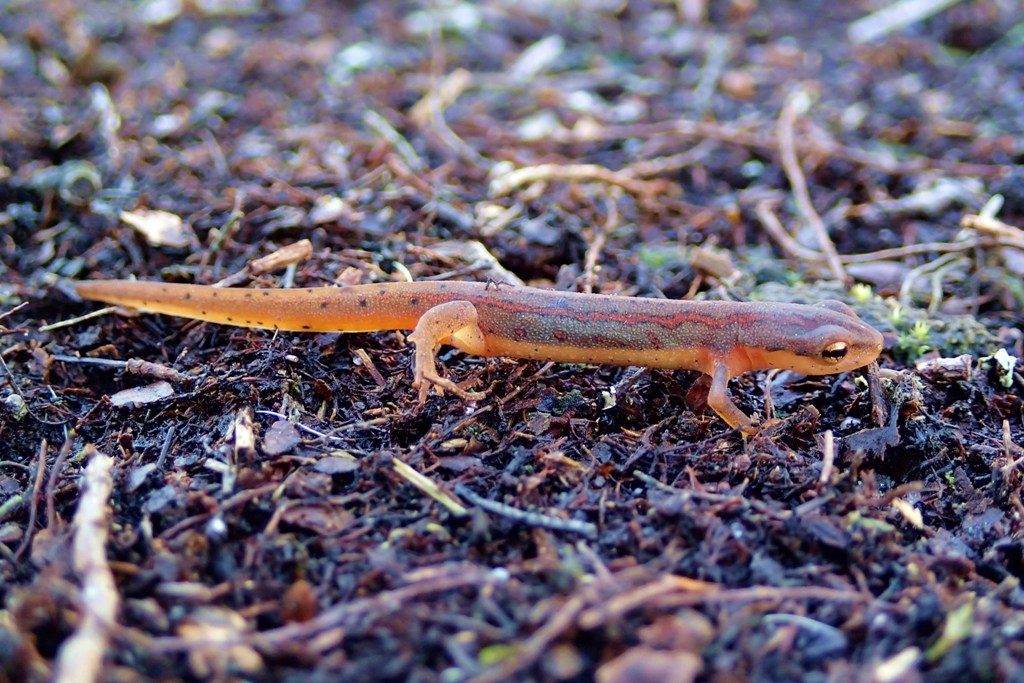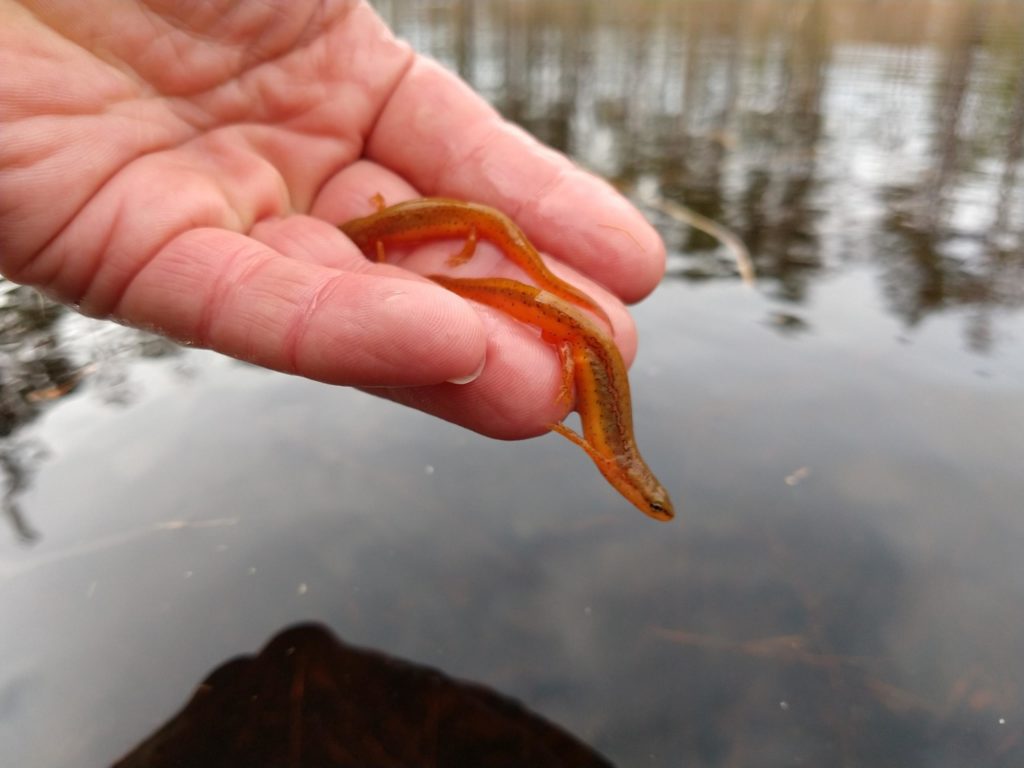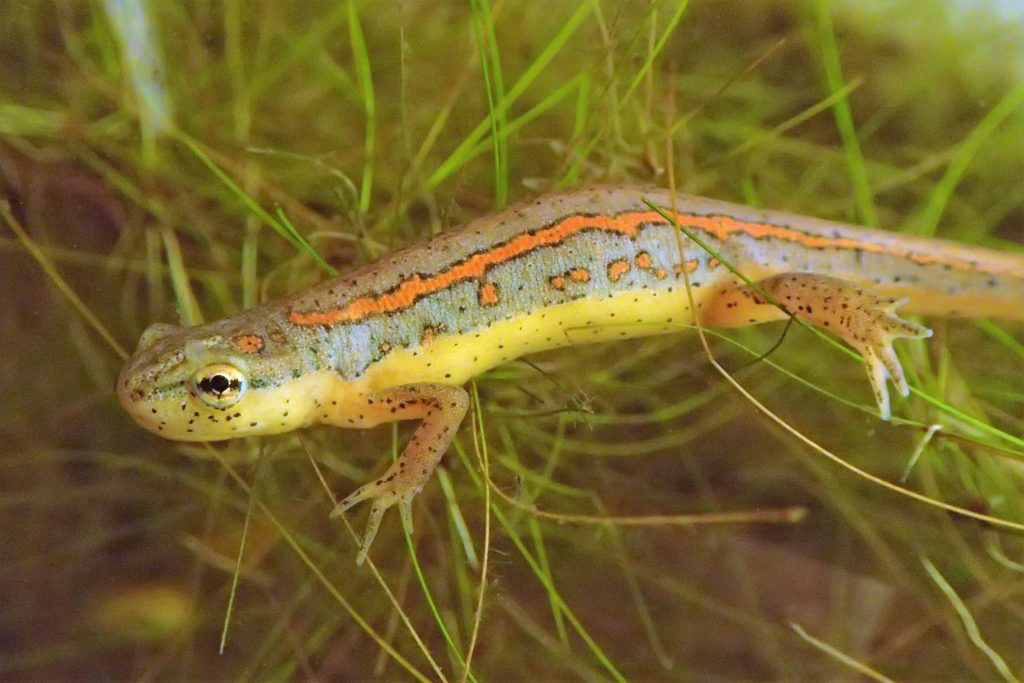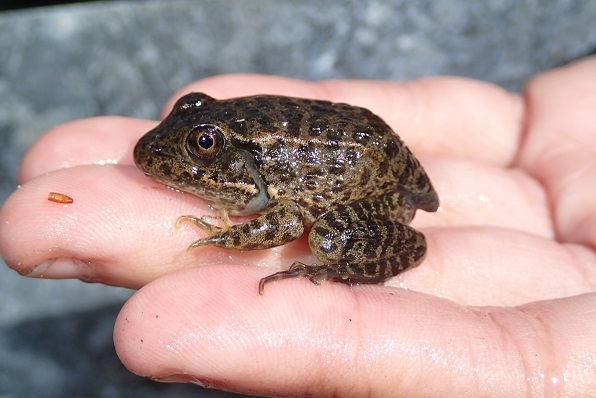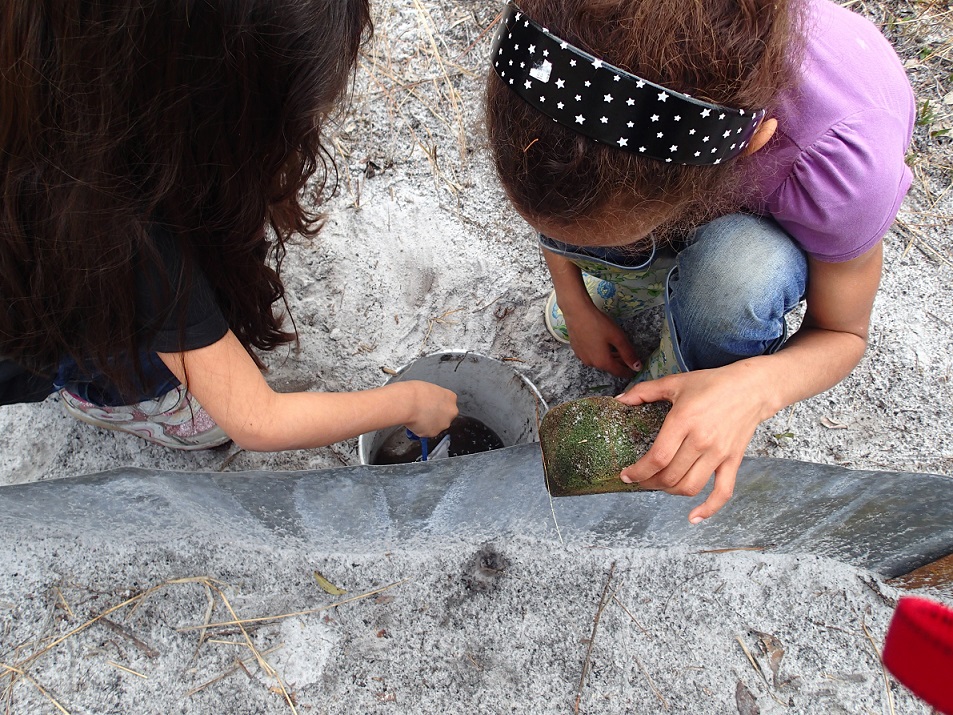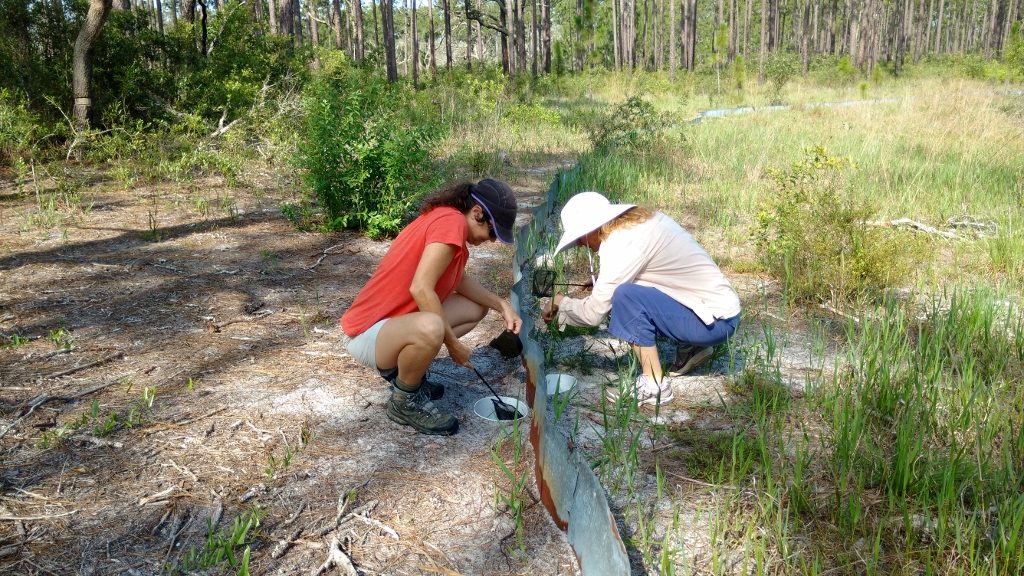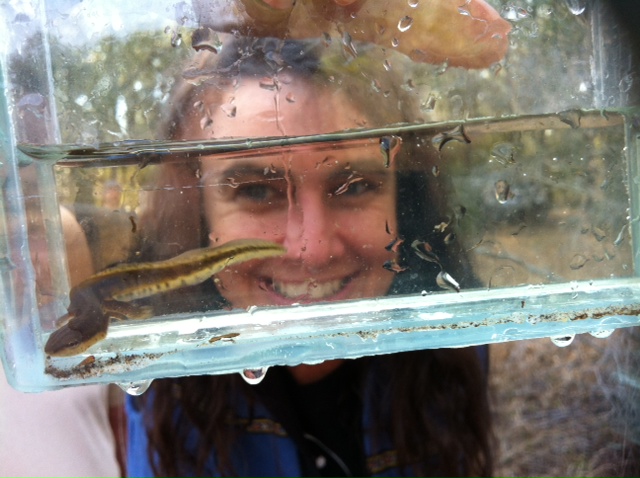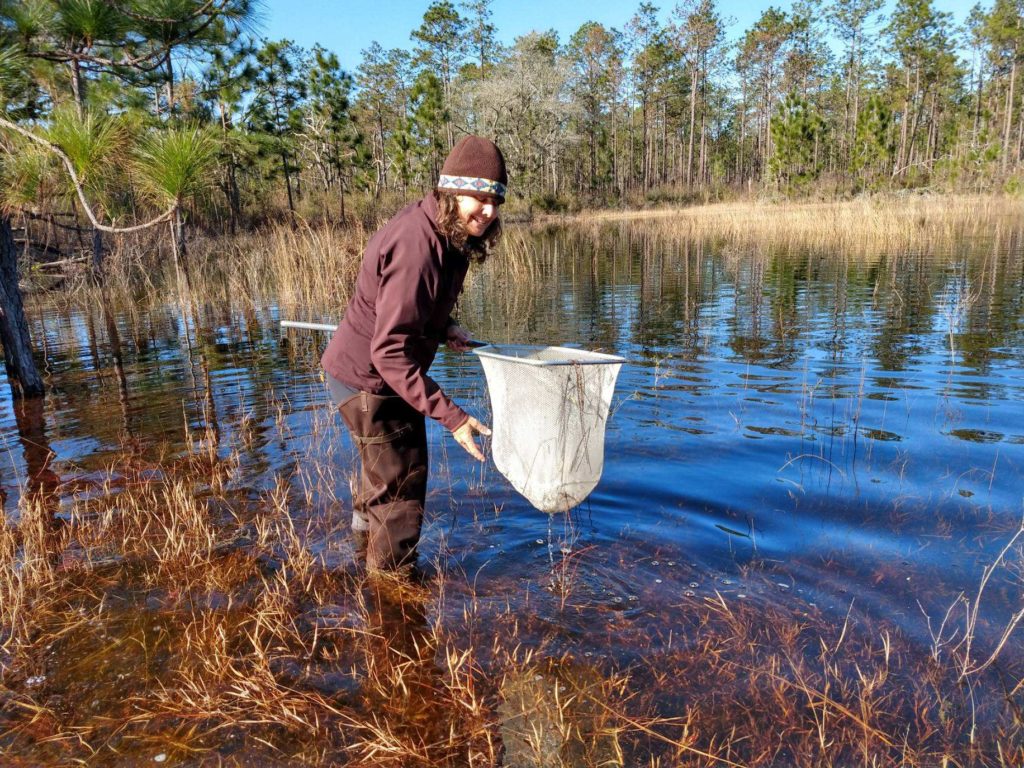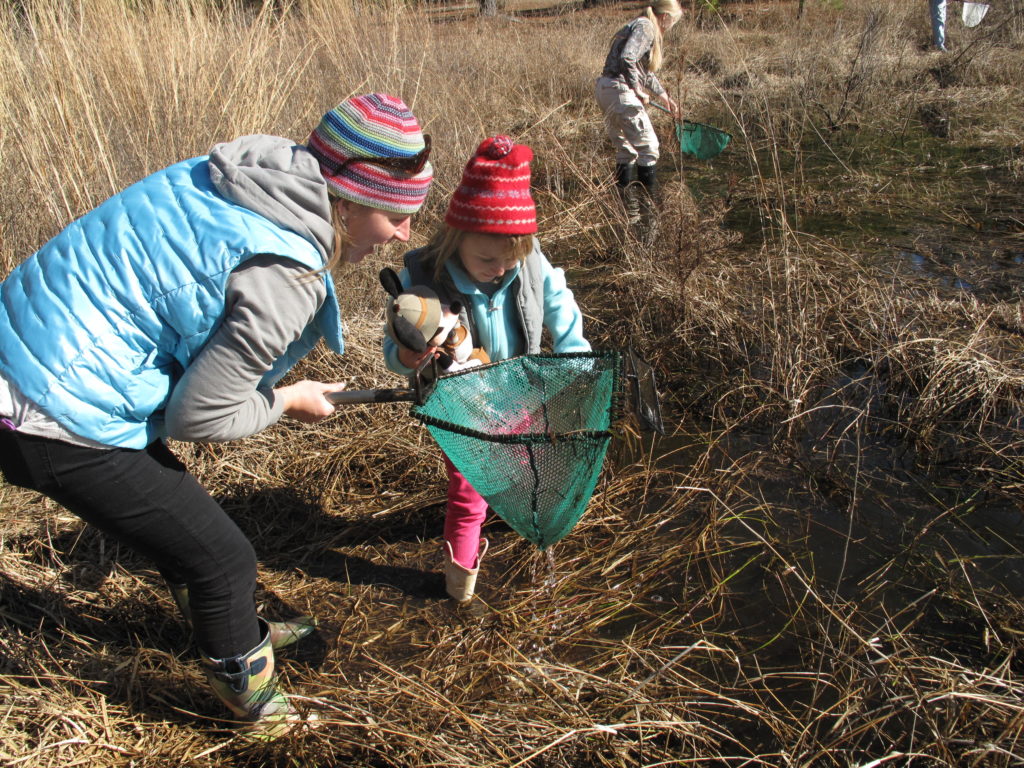The striped newt (Notophthalmus perstriatus) is a small salamander species with a very restricted global range — it is found only in northern Florida and southern Georgia.
Some interesting characteristics about this salamander,
- Striped newts spend the majority of their time in the uplands (mostly below ground) and utilize wetlands only for breeding. They have been found almost 1/2 mile from the nearest breeding pond.
- Striped newts live in fire-maintained, dry sandy habitat like sandhills and scrub and depend on isolated, herbaceous, ephemeral wetlands as breeding habitat. These are marsh wetlands that do not hold water year round and therefore do not harbor fish. They are a unique landscape feature and, due to their often small size, have little to no environmental protections.
- Striped newts are winter-breeders. They typically migrate to their breeding wetland in late fall/early winter when cold fronts refill the wetlands. Adults remain in the wetland for several weeks. Their larvae are aquatic and take 6-9 months to fully mature.
- Newts, along with some other salamander species, have a complex life cycle. Larval striped newts can ‘decide’ to remain in a wetland instead of metamorphosing into a terrestrial eft and migrating to upland habitat. These larvae that remain in the wetland can then become sexually mature (we call them paedomorphs) while retaining larval characteristics like external gills and keeled tail (see pic below). If the wetland begins to dry or food resources decrease, the paedomorph can absorb its gills, become a terrestrial adult, and leave the wetland.
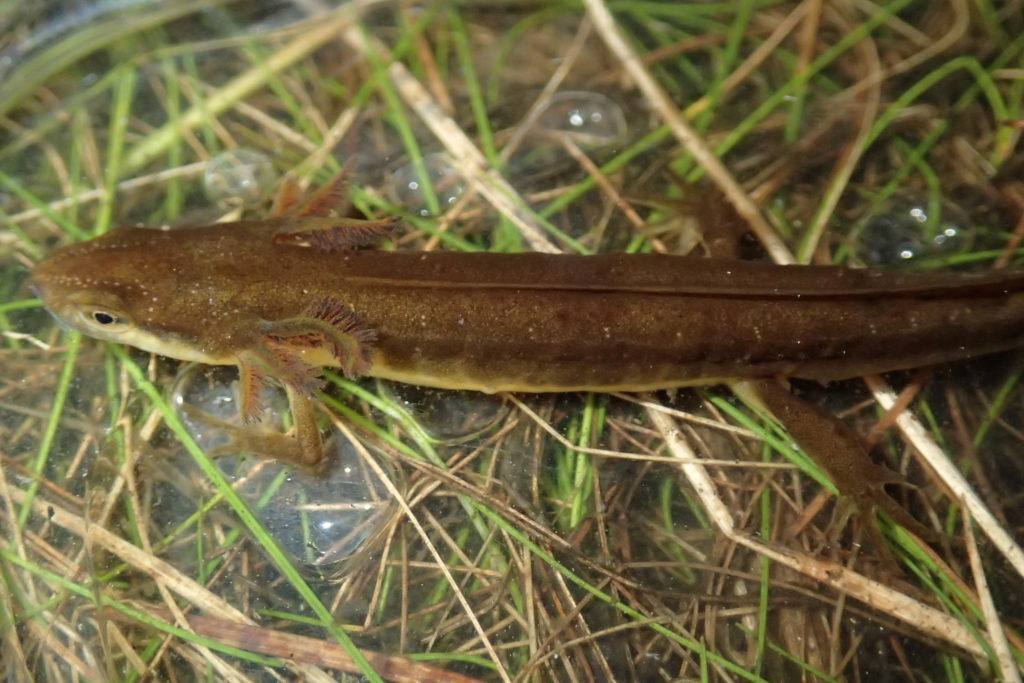
In 2008, we petitioned the US Fish and Wildlife Service to list the striped newt as a federally threatened species under the Endangered Species Act. In 2011, the USFWS ruled that listing was warranted and the striped newt became a candidate for listing, awaiting behind the backlog of other species also waiting for listing. Fast forward to 2018 and the USFWS inexplicably denied listing to the striped newt, along with many other species. Click here to read our petition to list or click here to read about the Southern Environmental Law Centers investigation into why the listings were denied.
The striped newt population in the Apalachicola National Forest (ANF) declined to undetectable levels in the early 2000’s. During the 1990s, we were able to detect striped newts in known breeding wetlands about half the time we sampled. By 2011, we had not seen a larval striped newt in 13 years. This severe decline instigated our coordination with the US Forest Service to create a self-sustaining population in the ANF – to bring the striped newt back to an area which once harbored one of the largest populations in the world. Since that time, our project has grown to include many agencies, zoos, and organizations.
As of February 2020, we have repatriated over 2,000 adult and larval striped newts into six ANF wetlands!
Reports from each year of our project can be accessed from our Publication page.
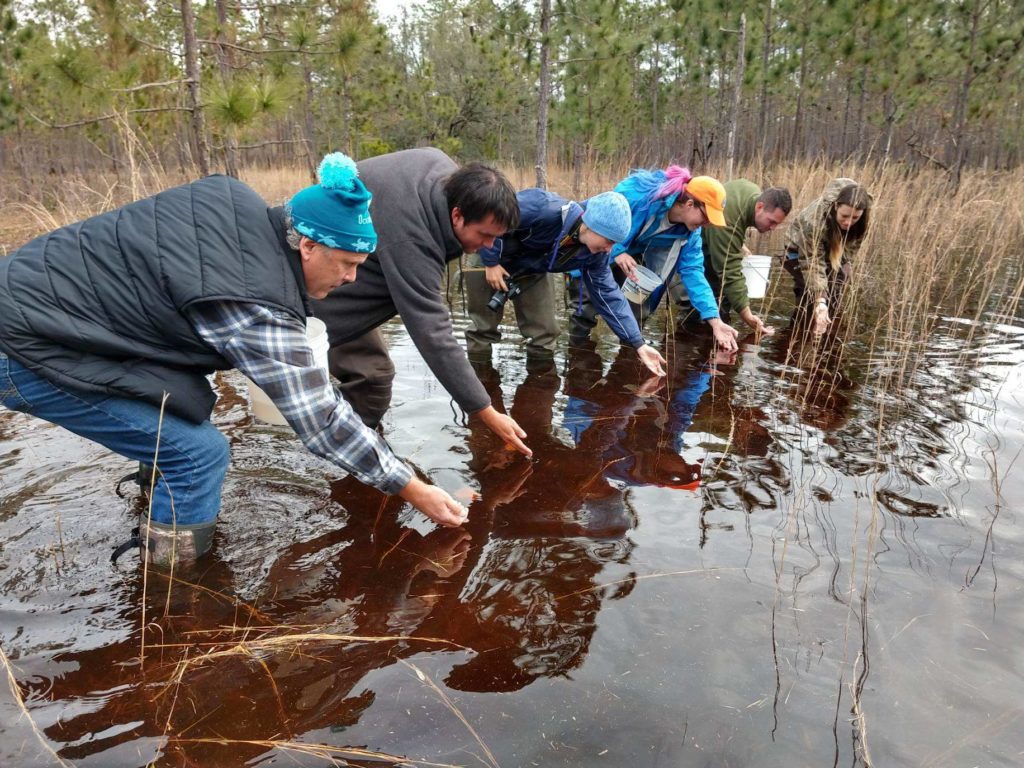
You can get involved in striped newt conservation too! Here’s how:
- Become a member! Membership supports our efforts to bring back the striped newt and also provide educational opportunities to the general public. Bonus – CPI members get early notification of ecotours and other activities and special invitations to events. Members at the Caudata level are invited to participate in a striped newt release!
- Join our Striped Newt Repatriation Team – our striped newt repatriation project involves checking drift fences with associated bucket traps, that encircle four wetlands in the Apalachicola National Forest, every day from January through July. Obviously we could use some help and that’s where our Team comes in! We train you and you volunteer to check the fences at your convenience using an online sign-up calendar. Email Rebecca (rebecca@coastalplains.org) to be notified about training opportunities.
- Participate in our Adopt an Ephemeral Wetland Program through which you can help us monitor amphibian populations of ephemeral wetlands in the Apalachicola National Forest. It’s a fun way to get outside and learn local ecology!
If you would like to donate specifically to the striped newt project, consider Adopting a Newt…it makes a great gift too!
